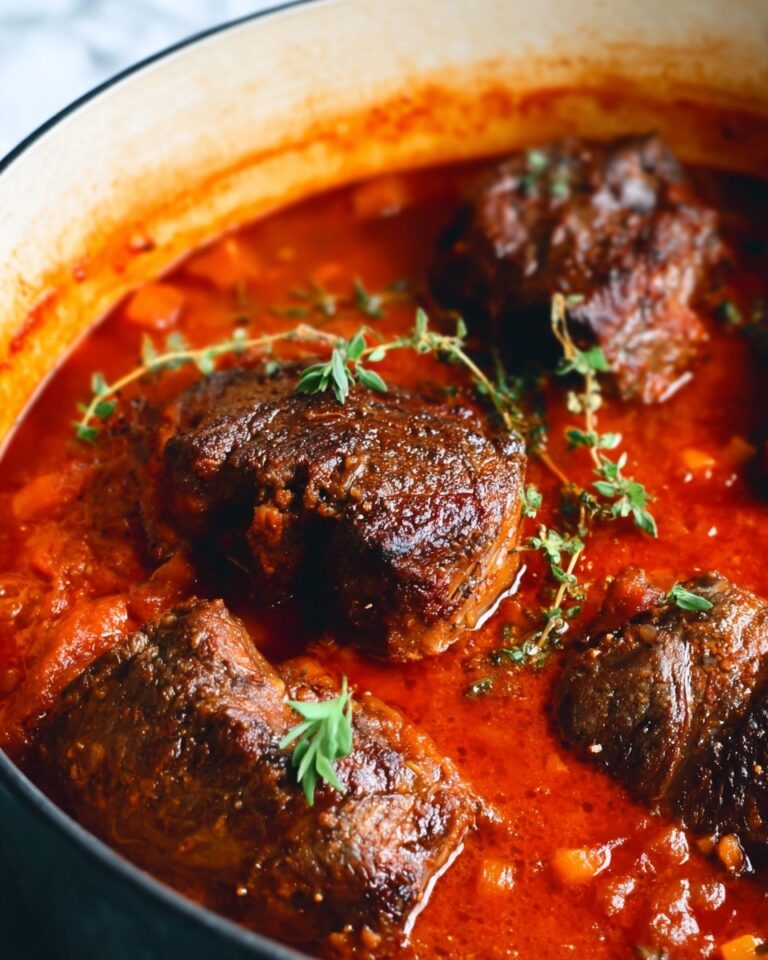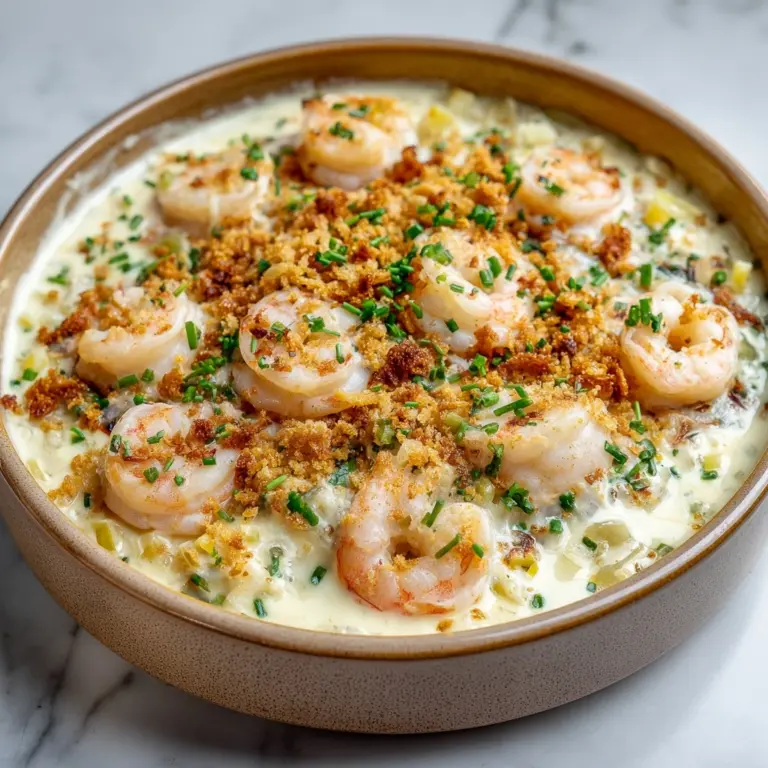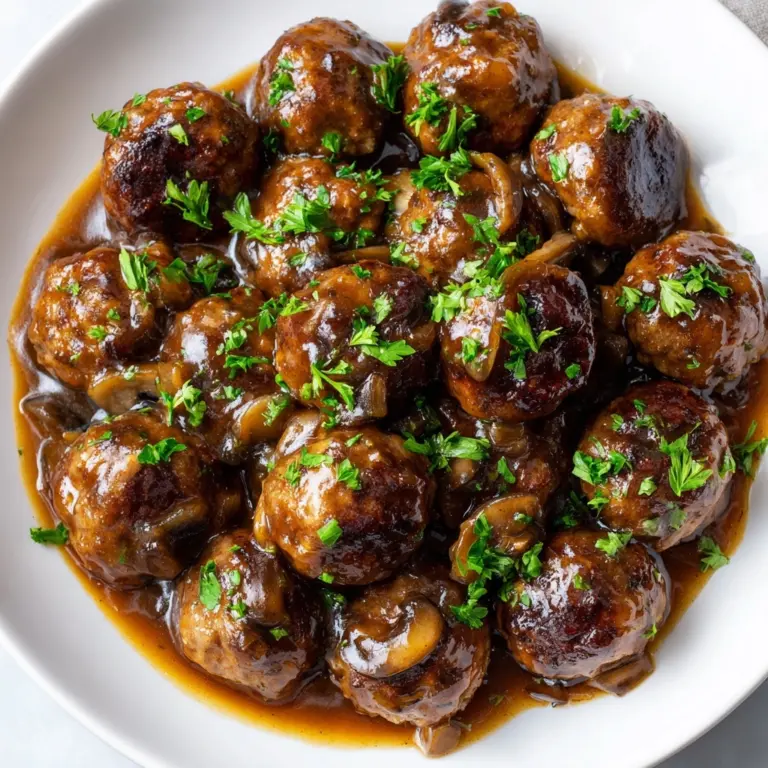If you’ve ever dreamed of pulling a golden, bakery-style loaf from your own oven, you’re in for a treat with this Soft Fluffy French Bread. It’s everything you love about classic French bread—airy, tender crumb, a delicate crust, and that irresistible aroma—but easy enough for any home baker to master. Whether you’re making sandwiches, serving alongside soups, or just slathering on butter while it’s warm, this recipe delivers pure comfort every time.
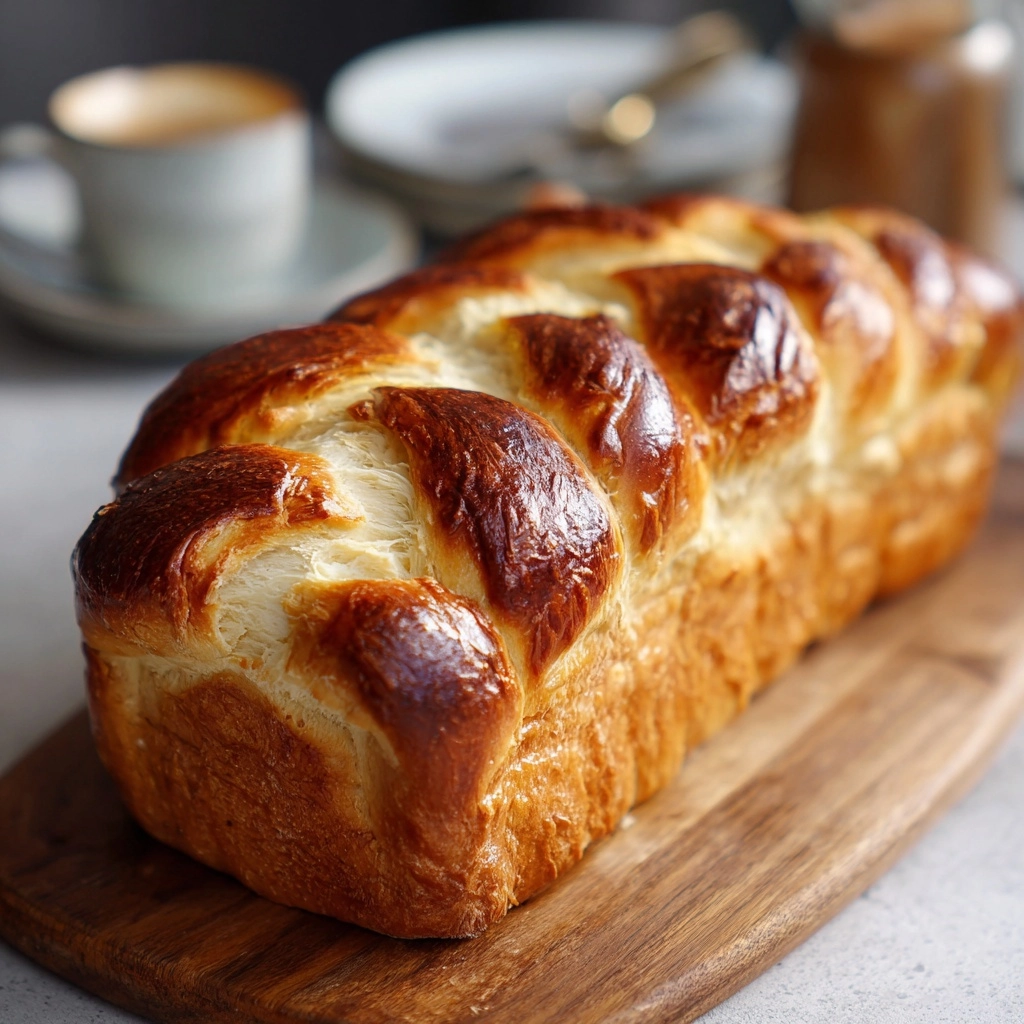
Ingredients You’ll Need
These straightforward ingredients are the secret behind the magic of Soft Fluffy French Bread. Each one plays a role in building flavor, structure, and that signature soft texture—so don’t skip or substitute if you want truly bakery-worthy results!
- Active dry yeast (2 1/4 teaspoons, or 1 packet): This is the engine behind the rise, giving your bread its airy lift and beautiful crumb.
- Sugar (1/2 teaspoon): Just a touch helps activate the yeast and adds a subtle hint of sweetness.
- Warm water (1 1/2 cups, about 110°F): The perfect temperature wakes up the yeast without killing it—think pleasantly warm bathwater.
- Salt (1 1/2 teaspoons): Essential for flavor and for controlling the yeast’s growth so your bread doesn’t over-expand.
- All-purpose flour (3 1/2 to 4 cups): The foundation of your loaf; start with the minimum and add more as needed for a soft, supple dough.
- Olive oil (1 tablespoon, for greasing): Keeps the dough from sticking and adds a touch of richness to the crust.
- Egg white mixed with 1 tablespoon water (for egg wash): This simple glaze gives the finished loaves their gorgeous sheen and helps the crust develop just the right snap.
How to Make Soft Fluffy French Bread
Step 1: Activate the Yeast
Start by combining the warm water, sugar, and active dry yeast in a large mixing bowl. Give it a gentle stir and let it sit undisturbed for 5 to 10 minutes. You’ll know the yeast is ready when you see a foamy layer across the surface—this means your bread is off to a great start and will rise beautifully.
Step 2: Mix the Dough
Once the yeast is foamy, stir in the salt and 2 cups of flour. Mix until everything is smooth and just combined. Now, gradually add the remaining flour, about 1/2 cup at a time, mixing between additions. You’re looking for a soft, slightly sticky dough that comes together but isn’t dry or stiff.
Step 3: Knead Until Smooth
Turn the dough onto a lightly floured surface and knead for 6 to 8 minutes. Don’t rush this step—it’s how you develop that signature Soft Fluffy French Bread texture. The dough should become smooth, elastic, and bounce back when you press it lightly.
Step 4: First Rise
Place your kneaded dough in a lightly oiled bowl, turning it once so the surface is coated and won’t dry out. Cover with a clean towel and set aside in a warm spot for about 1 hour, or until doubled in size. This slow, gentle rise is where the bread develops its tender crumb and mild flavor.
Step 5: Shape and Second Rise
Punch down the risen dough to release extra air, then divide it in half. Shape each half into a long loaf—classic French bread style—and set them on a parchment-lined baking sheet. Cover loosely and let rise again for 30 to 40 minutes, until noticeably puffy.
Step 6: Prepare for Baking
Preheat your oven to 375°F. Brush each loaf with the egg wash for that irresistible bakery shine, then use a sharp knife to make 3 or 4 shallow diagonal slashes across the top of each loaf. This helps the bread expand evenly in the oven and gives it that classic look.
Step 7: Bake to Perfection
Bake for 20 to 25 minutes, or until the loaves are golden brown and sound hollow when tapped on the bottom. Cooling them on a wire rack ensures the bottoms stay crisp and the interior stays pillowy. If you want a softer crust, cover the loaves with a towel while they cool.
How to Serve Soft Fluffy French Bread
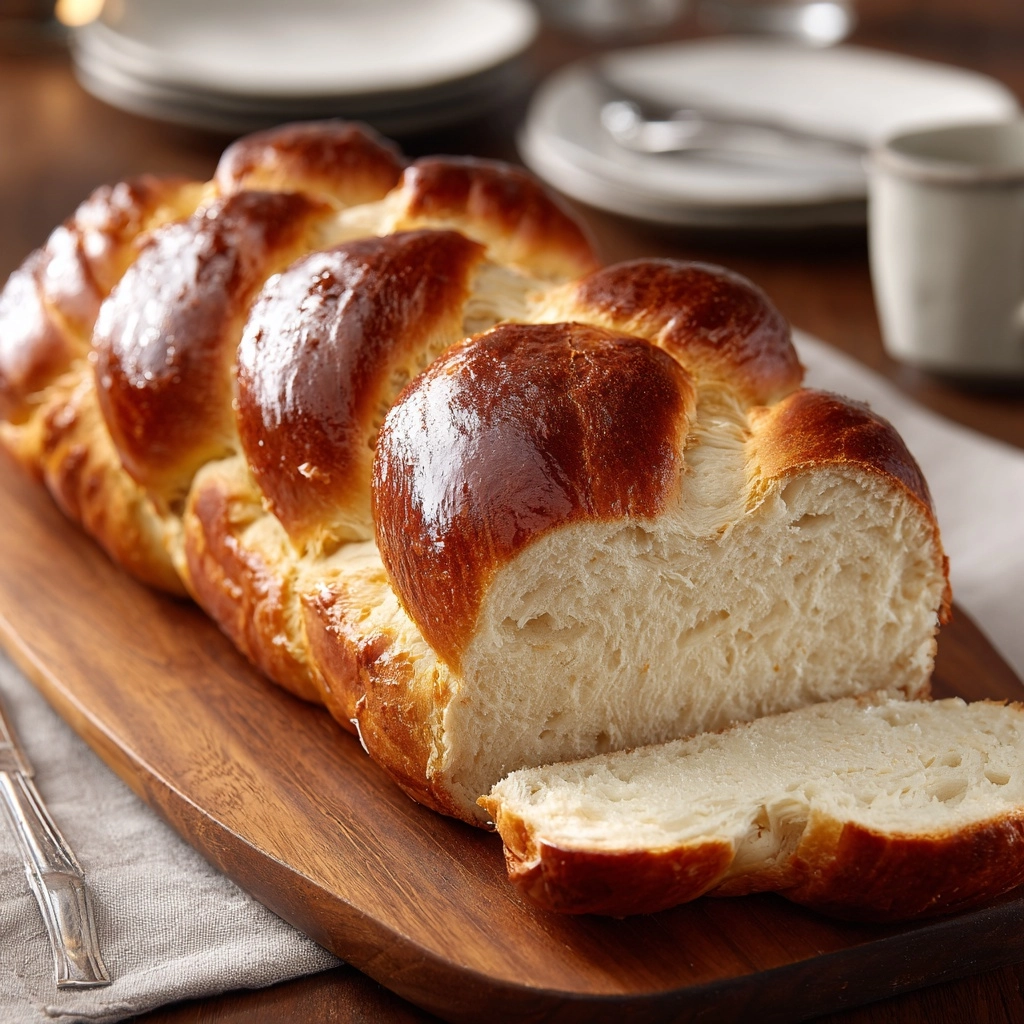
Garnishes
For a beautiful finish, sprinkle your warm loaves with a pinch of sea salt or fresh chopped herbs right after baking. A light brush of melted butter or olive oil amps up the flavor and gives the crust a glossy finish—perfect for impressing at the dinner table.
Side Dishes
Soft Fluffy French Bread is incredibly versatile. Serve thick slices alongside hearty soups, creamy pastas, or crisp salads for a meal that feels like a French bistro at home. It’s also a stellar partner for cheese boards, dips, or a classic bowl of tomato soup.
Creative Ways to Present
Try slicing and toasting pieces for crostini, use as the base for open-faced sandwiches, or hollow out a loaf to create a bread bowl for creamy dips. For gatherings, slice the bread on a bias and arrange on a platter for a rustic, inviting look that’s sure to draw a crowd.
Make Ahead and Storage
Storing Leftovers
If you have any Soft Fluffy French Bread left (which is a rare event in most homes!), simply wrap the cooled loaves tightly in plastic wrap or foil. Store at room temperature for up to two days—just keep them away from direct sunlight and moisture.
Freezing
For longer storage, freeze your fully cooled loaves. Wrap first in plastic wrap, then in a layer of foil to lock in freshness and prevent freezer burn. You can freeze whole loaves or pre-slice them for quick, single servings. They’ll stay delicious for up to two months.
Reheating
To restore that fresh-baked feel, thaw frozen bread at room temperature, then warm in a 350°F oven for 8 to 10 minutes. If reheating from room temperature, a quick toast or brief oven reheat brings back the fluffiness and revives the crust’s gentle crunch.
FAQs
Can I use instant yeast instead of active dry yeast?
Absolutely! You can substitute instant yeast in equal amounts for active dry yeast. Just skip the proofing step and add it directly to your flour—your Soft Fluffy French Bread will still turn out beautifully fluffy and light.
Why did my bread turn out dense instead of fluffy?
Denseness usually means the dough didn’t rise enough or was worked with too much flour. Make sure your yeast is active (foamy), let the dough rise fully, and avoid adding more flour than necessary to keep the dough soft and supple.
How can I get a crispier crust?
For a crispier crust on Soft Fluffy French Bread, place a shallow pan of water on the bottom rack of your oven while baking. The steam helps create that classic French bakery crust without losing the pillowy interior.
Can I make this bread ahead for a party?
Definitely! Bake the bread a day ahead, wrap tightly, and store at room temperature. On the day you serve, reheat briefly in the oven for that fresh-baked aroma and softness your guests will love.
Is this recipe suitable for beginners?
Yes! This Soft Fluffy French Bread recipe is straightforward and forgiving enough for bakers of any skill level. Just follow each step, be patient with the rises, and you’ll have bakery-style bread right from your own kitchen.
Final Thoughts
Baking your own Soft Fluffy French Bread is such a rewarding experience, and the results are truly special. Whether you’re sharing it with loved ones or savoring a slice solo, this bread brings comfort and joy to any meal. Give it a try—you might just find it becomes a staple in your kitchen!
Print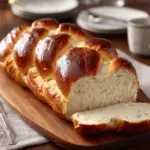
Soft Fluffy French Bread Recipe
- Prep Time: 20 minutes
- Cook Time: 25 minutes
- Total Time: 2 hours
- Yield: 2 loaves (about 16 slices total)
- Category: Bread
- Method: Baking
- Cuisine: French
- Diet: Vegetarian
Description
This Soft Fluffy French Bread recipe yields light and airy loaves with a tender crumb and a golden crust. Perfect for sandwiches or as a side, it combines simple ingredients and straightforward steps to create a classic French favorite with a soft texture that’s easy to slice and enjoy.
Ingredients
Dry Ingredients
- 2 1/4 teaspoons active dry yeast (1 packet)
- 1/2 teaspoon sugar
- 1 1/2 teaspoons salt
- 3 1/2 to 4 cups all-purpose flour
Wet Ingredients
- 1 1/2 cups warm water (about 110°F)
Others
- 1 tablespoon olive oil (for greasing)
- 1 egg white mixed with 1 tablespoon water (for egg wash)
Instructions
- Activate Yeast: In a large mixing bowl, combine the warm water, sugar, and active dry yeast. Let the mixture sit for 5–10 minutes until it becomes foamy, indicating the yeast is active.
- Make Dough: Stir in the salt and 2 cups of all-purpose flour into the yeast mixture. Mix until smooth, then gradually add the remaining flour, about 1/2 cup at a time, until a soft dough forms.
- Knead Dough: Turn the dough onto a lightly floured surface and knead for 6–8 minutes until it is smooth and elastic, which develops gluten for texture.
- First Rise: Place the kneaded dough in a lightly oiled bowl, turning once to coat all sides. Cover the bowl with a clean towel and let it rise in a warm place for about 1 hour, or until the dough doubles in size.
- Shape Loaves: Punch down the risen dough and divide it in half. Shape each half into a long loaf and place them on a parchment-lined baking sheet. Cover and allow them to rise again for 30–40 minutes.
- Prepare for Baking: Preheat your oven to 375°F (190°C). Brush the loaves gently with the egg white and water mixture to give them a shiny finish. Make 3–4 shallow diagonal slashes on top of each loaf with a sharp knife to allow expansion during baking.
- Bake: Place the loaves in the oven and bake for 20–25 minutes, until the crust is golden brown and the loaves sound hollow when tapped on the bottom.
- Cool Bread: Remove the loaves from the oven and transfer them to a wire rack to cool completely before slicing to preserve their soft texture.
Notes
- Covering the bread with a clean towel while cooling helps keep the crust soft.
- For a crisper crust, place a pan of water in the oven during baking to add steam.
- Once fully cooled, loaves can be frozen by wrapping tightly in plastic wrap and aluminum foil for later use.
Nutrition
- Serving Size: 1 slice
- Calories: 120
- Sugar: 0g
- Sodium: 170mg
- Fat: 1g
- Saturated Fat: 0g
- Unsaturated Fat: 0.5g
- Trans Fat: 0g
- Carbohydrates: 24g
- Fiber: 1g
- Protein: 4g
- Cholesterol: 0mg





